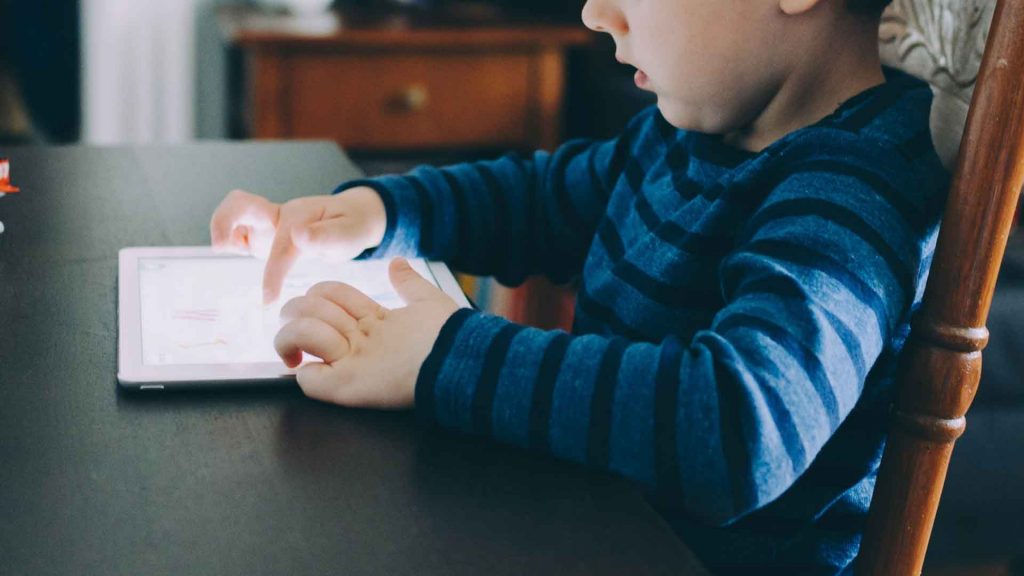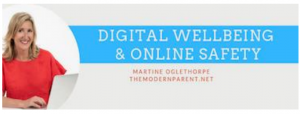
What COVID-lockdowns have taught us about screentime – Martine Oglethorpe
Being able to critically evaluate the content we consume is fast becoming one of the most crucial skills we can teach young people when it comes to helping them navigate the online world. As we are inundated with copious amounts of new content every second of every day, the ability to determine the relevance, validity, and truthfulness of those videos, photos, memes, and articles, becomes increasingly difficult and problematic. If there is anything we have learned from our times in lockdown, it is the changing role, and hopefully a shift in understanding, of the role that screens and technology play in all of our lives. Finally, we have been forced to change the rhetoric around what it means to have “screentime” and maybe even moved toward making the term itself obsolete. Here is what I hope we are starting to realise when it comes to young people using technology and devices.
Not all screentime is equal
There is a big difference in how we use screens. Of course, they can be used for good (connecting with friends and family, working, learning, exercising, sharing joy, motivation, getting help, being entertained in positive ways etc.) and of course for bad (being scammed, cyberbullied, harassed, abused, inciting feelings of worthlessness, comparing oneself to others, feeling excluded, etc.). There are also differences in what we do with the screens. We can do a vast range of creating, engaging, collaborating, sharing, consuming, and scrolling. And the purpose, intent, and health of those pursuits can ensure a vastly different screentime experience. Consequently, there is a big difference between young people playing an age-appropriate game with friends, as opposed to hanging out in social networks made by adults for adults where exposure to content may be inappropriate, dangerous or threatening. So no, all screentime is definitely not equal, and not, therefore, something we should be comparing in terms of a measurement in time.
We can no longer ask “How much screentime?”
Due to the unequal nature of screentime, it is no longer sufficient to simply ask “How Much screentime should my child have?” Our recent experiences of working and learning from home have also ensured our need to look beyond how long we are using screens and technology. The questions we should be asking instead, therefore, are …… What are they doing on the screens? Is what they are doing online a productive way to spend their time? Is it healthy? Is it creative? Is it connecting in positive ways? Is it leading to positive change? Is it age-appropriate? Is it safe? Are they using it with others to strengthen relationships? To bond with family members? To create rather than just consume? To learn and evolve? Looking at the nature of what they are doing, the content they are consuming and the interactions they are having gives us a far greater understanding of the health of their time on the screens. What effect are the screens having on them? Are they coming away from the screens with their social and emotional wellbeing intact? Are they feeling supported? Are they enjoying a laugh? Are they feeling empathy for others? Are they feeling inspired and uplifted rather than being excluded or having their self-esteem torn apart? Are their experiences making them anxious or even depressed? Looking at the effects of their time online will go a long way to determining whether that time on the screens is healthy for that individual child. What are they missing out on? When determining the role technology plays in our lives, we can look at those experiences that we may be missing out on to determine whether we have the balance right. What is the trade-off for being on the screens? Are we still able to manage to fit in all the things we need to do in order to live healthy balanced lives? Are we getting plenty of exercise and fresh air? Are we getting work, learning, and chores done? Are we stopping for mealtimes and getting ample sleep? Are we having downtime to daydream, hang out with mates or learn new skills? If we are managing to fit all these things into our days, then we most likely have a good balance. If these things are being neglected due to time on screens, then we may need to make some changes.
The screens have helped us survive
Without access to work, friends, online shopping delivery, access to information, access to education…our very survival during the times of COVID may well have been further in jeopardy. We know that as humans we crave connection. The screens have played a vital role in allowing us to connect. Many have managed to maintain their work as they were able to work remotely and continue businesses. For many therefore the screens became a vital lifeline between the four walls of their home and the outside world, both financially, socially, and emotionally. Our use of the screens needs to be a constant and evolving checklist of balance, wellbeing, and safety. Our continued reliance on the screens for so many elements of our lives and livelihoods will ensure they remain a constant reminder of the complexities and nuances of the digital world.

Martine is an accredited speaker with the Office of the eSafety Commission of Australia, has a background in
secondary education, a Masters in Counselling and is a mother to 5 boys. Through her personal and professional
work with families, she recognises the important role technology plays in the social and emotional wellbeing of
young people.
Martine is a keynote speaker for parenting and education conferences, presents to parent groups, works regularly
with students and provides professional development to teachers. She has a passionate interest in helping families
safely navigate the modern world of parenting in a way that offers understanding as well as practical and realistic
strategies to empower parents to teach, guide and support their children. She has recently released her new book
“The Modern Parent: Raising a Great Kid in the Digital World” which is available for purchase from her website
themodernparent.net

